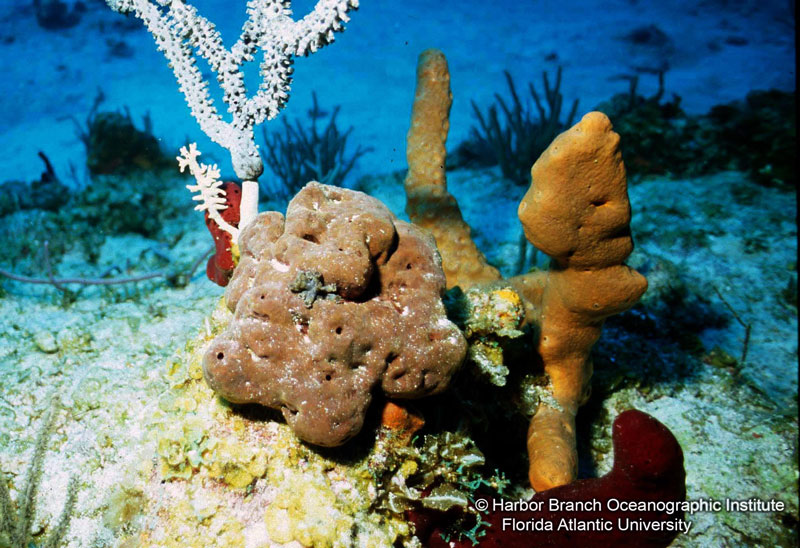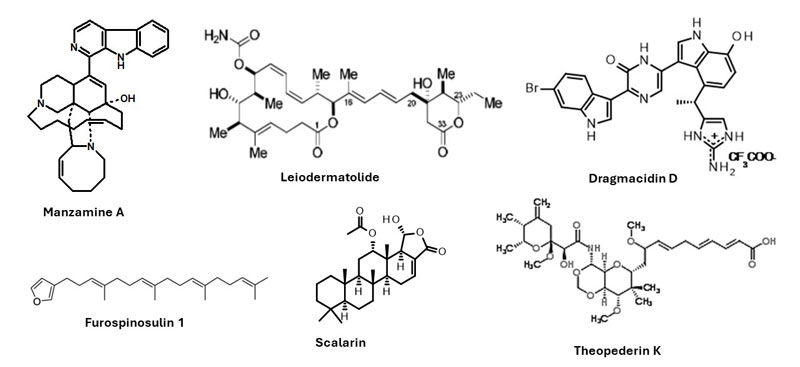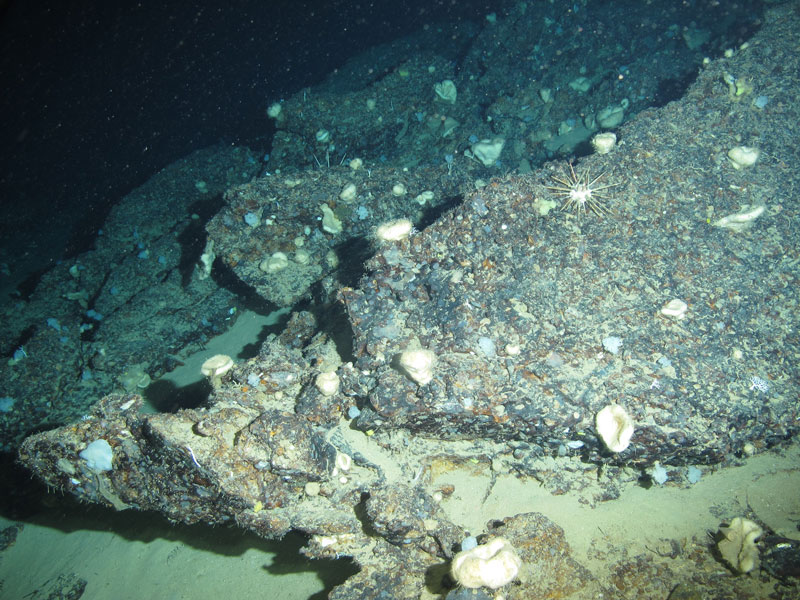Exploration of Deepwater Habitats off Puerto Rico and the U.S. Virgin Islands for Biotechnology Potential
Natural Products and Why We Love Them So Much
About half of the medicines we currently use are based on a natural product, including aspirin, morphine, and penicillin. Natural products are chemical compounds made by an organism that are not essential for their survival but give them some evolutionary advantage. Many marine organisms, like sponges and corals, cannot move. Thus, they produce natural products — or use those produced by the microbes that live in them — to help them find a good place to settle, find a mate, avoid being eaten, gain more territory, or fight infections. Some of these natural products have also proven useful in fighting human diseases.

For more than 40 years, the Marine Biomedical and Biotechnology Research group at Harbor Branch Oceanographic Institute has been studying marine natural products in hopes of discovering natural products that can be used to treat cancer, infectious and parasitic disease, neurological diseases such as Alzheimer’s, and more.
In my lab, we look for marine natural products that can have an effect on human cancers. Our first focus is to find marine natural products that kill cancer cells, with preference for those that kill many cancer cells for each normal cell they kill, which results in fewer side effects. We are also looking for products that enable the immune system to respond better to tumors or enhance the response to chemotherapies or that can reduce inflammation that facilitates cancer initiation and progression.

During the Exploration of Deepwater Habitats off Puerto Rico and the U.S. Virgin Islands for Biotechnology Potential expedition, we collected more than 100 marine invertebrates to study their biotechnology potential. Most of them were sponges.

Sponges, like other organisms, can contain many different natural products. To learn about an individual sponge’s natural products and their potential benefits, we prepare an extract from it. This process can be compared to making medicinal tea. For example, instead of extracting pain-relieving chemicals from tea leaves by steeping them in boiling water, we freeze-dry our sponge sample and grind it into small pieces (like tea leaves) with ethyl alcohol. We then separate out the natural products in the extract into "enriched mixtures" with only about four or five natural products each. When testing these mixtures against cancer cells, this helps identify which natural product (if any) is responsible for the desired result.
Natural products from terrestrial organisms have led to 48% of cancer medicines. Thus, it makes sense that the ocean, which covers approximately 70% of Earth, will lead to many new medicines and vaccines to treat and prevent the collection of the more than a hundred diseases described by the word "cancer" — as well as many other other human diseases.
By Esther Guzmán, Harbor Branch Oceanographic Institute, Florida Atlantic University
Published September 19, 2024